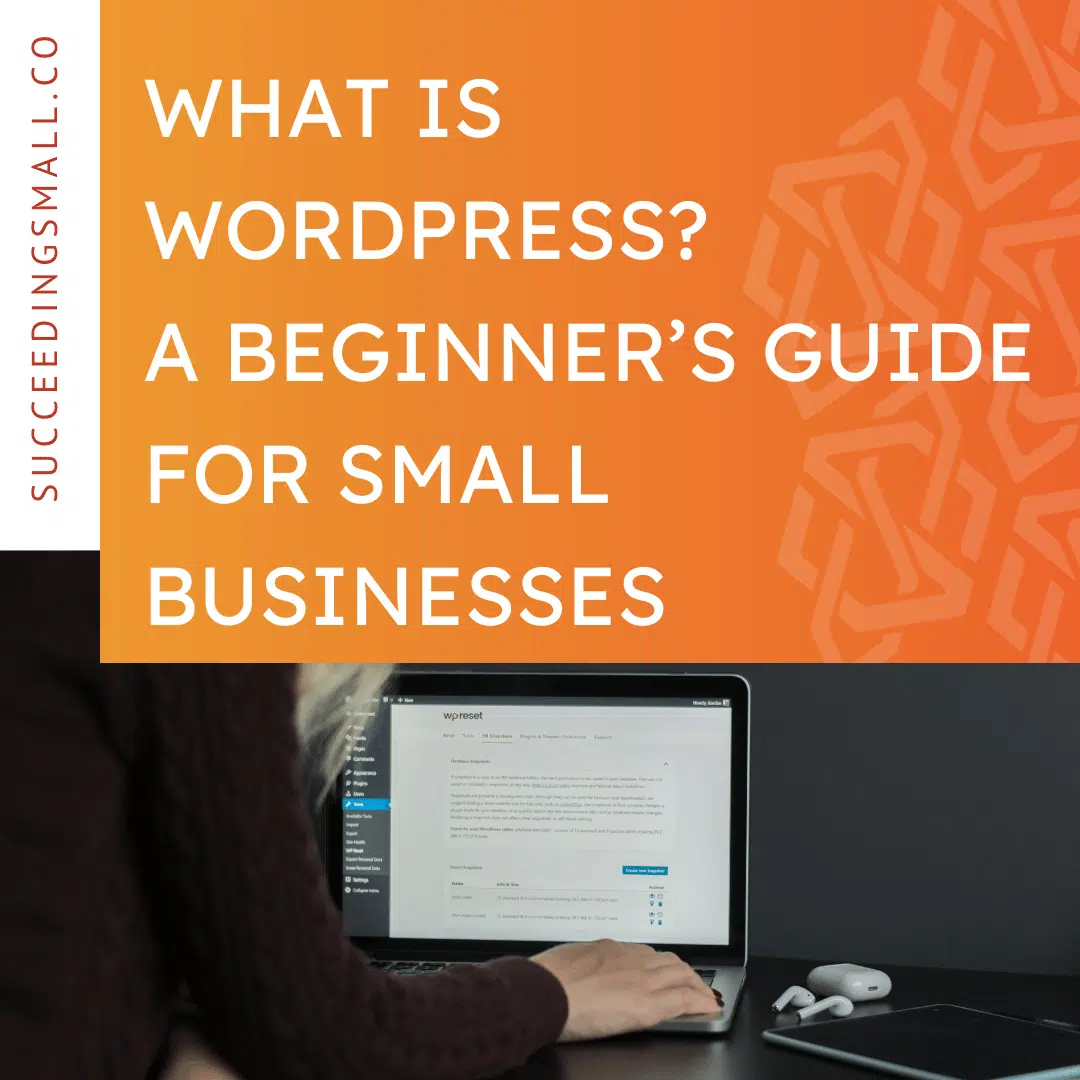As a small business, it is important to consider what should be done with old blog posts. After investing so much time and effort into generating quality content for your website each month, we need to understand the shelf life of this content and how to update old blog posts.
Succeeding Small is a digital marketing agency located in Colorado Springs that specializes in assisting small businesses with Search Engine Optimization, web design, social media management, and so much more. We understand the importance of content creation. To help streamline the process of developing and updating quality content, we have developed a 10-step process that we utilize daily. Continue reading so you can implement these 10 steps within your own small business.

1. Make a List of All of Your Blog Posts
When setting out to update blog posts for your website, we must begin with the basics and build upon already existing quality content. This requires us to understand what content we have. Therefore, for the first step of the process, we will need to gather all of our blog posts so that we can evaluate them.
2. Evaluate All Posts
Now that we have gathered our posts into a detailed list, we need to evaluate their overall effectiveness and how we can improve them for SEO and for the user. There are many ways this can be done. Our preferred method at Succeeding Small is to gather relevant data that can help us evaluate these posts and generate a spreadsheet with the following data:
- Blog Post Name
- Link To Blog Post
- Are Blogs Ranking (Yes/No)
- SEMrush Results Link
- Total Ranked Keywords
- Top 5 Keywords Blogs Rank For
- Volume
- Position
- Publish Date
3. Determine Which Posts Need Attention
After gathering all of the data for your blog posts, you can now develop a strategy on how to update each post and which ones need to be updated first. We also add Strategy and Urgency to the spreadsheet alongside the data.
4. Develop a Schedule to Integrate Updated & Future Content
Following your evaluation of the blog posts and determining their urgency, the posts need to be updated. Luckily, you do not need to do it all at once. In fact, it is crucial that you maintain a schedule of new content creation as well as updating the outdated content. Because of this, you will need to develop a schedule that integrates updating your old content and new content creation together.
However, we must warn you that there are a few exceptions to this. If your outdated content has any of the following, we suggest that you update it immediately.
- False Data or Information
- Grammar Issues
- Dated Company Info
- Broken Links
5. Evaluate Content Effectiveness
In step two, we gathered information regarding each and every blog post followed by an evaluation of the content’s update urgency in step three. Now we are going to take it one step further and look at a few things as we evaluate each post. We can do this by asking ourselves the following questions about each post after reading them.
- Does the post have old and outdated content?
- Is it underperforming?
- Was there a new industry update?
- Do our competitors have content that is outranking ours?
- Does our post have low engagement or views?
- Are we using outdated or irrelevant keywords?
- Is it beneficial for the user?
- Is it beneficial for us?
- Is it good-quality content?
- Is it relevant content?
- Is the post causing any issues?
6. Determine How the Post Needs To Be Adjusted
Now that we know what posts need assistance, it is time to determine what to do with each post. We have categorized the following by improving the post, expanding on the post, and repurposing the post.
Improved
If your goal is to improve the blog post overall, we suggest improving the following things:
- Blog post grammar
- Writing structure
- Overall voice
- Clarity
- Targets and addresses a specific topic
- Visual improvements
- Interlinking
- Alt text
- Scheme makeup
Expanded
Expanding on the existing quality content refreshes it and provides new valuable information to the consumers. During this process, you should update any pictures, data, links, keywords, and titles. Then, you should expand upon the overall content, credible sources, and relevant data.
Repurposed
For those rare posts that are updated and have good relevant content, you can still capture new site interactions by repurposing them. To do this, you could create infographics, videos, or audio content. You could also integrate new ideas or completely recreate the blog post.
7. Do One or a Combination of Steps 6
This step is simply the implementation of step six. After determining if you will improve the post, expand on it, or repurpose it, it is time to do one or a combination of these three adjustments.
8. Promote the New Post
Following the post being changed and posted on your website, it is important to capitalize on this opportunity to drive interested customers to the new content. This is easily done by creating a promotional graphic that you can then post on social media. This graphic can also be used to display the blog’s topic on your blog page. You can also create the best of blog posts similar to the greatest hits.
9. Monitor the Blog’s Progress
It is important to monitor the progress of all blog posts, especially repurposed or updated content, as they have the potential to make a great impact. You should monitor the post and determine if the content is:
- Promoting your brand
- Accurate
- User-friendly
- Easily accessible
10. Make Changes as Needed
It goes without saying that after monitoring the content, it is crucial that you address any issues quickly. This way your users have good quality and helpful content to consume, and Google can better understand what your business is all about.
Update Old Blog Posts with the Help of Succeeding Small
Succeeding Small understands that content creation and maintenance can be a hard and time-consuming process. This is why we have developed a team of professional content developers and SEO experts to help you update old blog posts and create new content. Our team of qualified digital experts can assist your company with content creation and management to allow you the freedom to focus on your business. If you are ready to advance your business in the digital world and increase your business potential, connect with Succeeding Small today!













